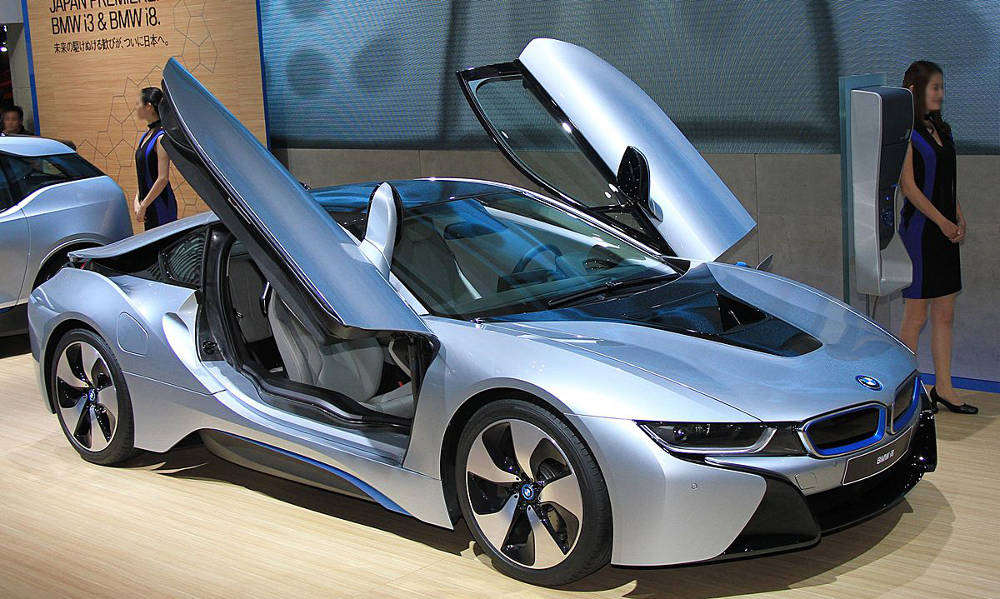[Photograph - BMW i8 at TMS 2013 by TTTNIS under Creative Commons]
Time and tide wait for none. And when brands renege on keeping up with changing times, they lose relevance and fade into oblivion—gradually, then suddenly, to paraphrase Earnest Hemmingway.
Against this backdrop, let me ask a simple question: Will creating a brand satisfy you? I guess for most of us the answer would be an unequivocal yes.
But pause for a moment. In today’s time, the companies we admire have upped their ante. Merely creating a brand does not satisfy them; they are taking one step further by creating cool brands. What is the difference between a brand and a cool brand?
A brand merely satisfies its customers, while a cool brand makes them happy.
What is the difference between a satisfied and a happy customer?
Watch a video of this episode or continue reading
Episode 20: New Rules of Business
To explain the difference, let us take you. You are proficient in your job. Whenever your company has to engage in a strategic negotiation, you are entrusted with the responsibility. You ensure it is concluded in your company’s favour. How do you feel at the end of the negotiation? Of course, satisfied because you had delivered on the promise.
When you reach office, your boss gives you fulsome praise in front of your peers: "We knew you would conclude the negotiation successfully … the company depends upon you … you have a great future with us … we see you in a bigger leadership role in due course."
What's your reaction to this praise? Your chest swells with pride, you walk tall, with a smile plastered on your face! How are you feeling? Satisfied or happy? Without doubt happy.
Why are you happy? The effusive praise and recognition, that too in front of your peers, boosted you self-esteem and confidence. It also helped you project yourself in the eyes of your peers the way you wanted to be projected—as an important member of the company; someone the company respects and depends upon; who has a great future with the company.
Let's revisit this scenario to glean the leanings. When you successfully concluded the negotiation, you delivered on your promise—that you are proficient in your job. That made you feel satisfied. But when your boss praised you in front of everyone, it made you happy because it delivered two additional benefits:
- It boosted your self-esteem and confidence.
- You were able to project yourself the way you desired in the eye of your peers.
What is true for you is also true for a brand.
People buy a brand based on the promise it makes to its customers. When it delivers upon the promise, it satisfies its customers.
A cool brand not only delivers on the promise, thus satisfying customers, but it also scores on two additional dimensions: it boosts their self-esteem and confidence, and it helps them project themselves in the eyes of their peers the way they desire. In short, a cool brand helps us shape our identity, enhance our confidence and self-esteem and helps us project ourselves to the rest of the world. Result: cool brands make us feel happy and good about ourselves.
Let us take BMW. It promises its owners the "joy of driving". When an owner drives it, she indeed experiences the joy of driving—thus BMW delivered on a key promise it had made to its customers.
Now how does an owner feel when she is sitting in her BMW? More confident or less confidant? Of course more confidant. And when her peers see her sitting in the BMW, what has she silently communicated about herself to her peers? "I can afford to own a BMW. I have class. I know how to appreciate the finer things in life." Who did the talking on her behalf? The brand, BMW. And because it did it efficiently and effectively, BMW has earned the right to be labelled a cool brand.
Let us quickly measure BMW on the three attributes that form the DNA of a cool brand and see where it stands:
- Deliver the promise: Indeed owners experience the promise held out by BMW—the joy of driving.
- Boost the owner's self-esteem and confidence: Indeed it does.
- Assist the owner in projecting themselves the way they desire in the eyes of their peers: Indeed it does—that too without saying a word. Who does the talking on their behalf? BMW does.
And because BMW scores high on all three parameters, it qualifies as a cool brand.
Now you know the secret recipe to transform your brand into a cool brand. But make sure your brand scores high on all three parameters.
A word of caution: A cool brand may not be universally cool. What is cool to you may not be cool to others. Take Salman Khan. He is cool for his many followers who affectionately call him bhai. But for others he is not cool. The lesson for us: Do not feel upset when a section of the target audience refuses to acknowledge your brand as cool.
Keep another point in mind: A cool brand comes with a shelf life. What is cool for one generation may not be cool for the next generations. Take cigarettes. In the 1950s and 1960s smoking cigarettes was considered cool. In the 21st century it is no longer cool and is in fact looked down upon.
What should brands do to remain cool?
Let us take the example of Lux soap. It has managed to remain cool across generations—it was cool for grandmothers, continued to be cool for mothers and is cool for today’s generation. What is the marketing strategy it has pursued to remain cool across 80 years?
It has consistently pursued a celebrity endorsement marketing strategy. In India, implementing it involved identifying and signing leading Bollywood screen sirens that are the epitome of coolness for their generation, to endorse Lux. A partial list includes Hema Malini, Zeenat Aman, Madhuri Dixit and Priyanka Chopra.
Since the celebrity personified coolness, Lux by association was perceived as cool.
Bottom Line: Do not be satisfied with creating just a brand. Aspire to create a cool brand that makes customers happy. For that you will have to devise a unique marketing strategy that not only helps your brand catapult into the league of cool brands but equally important, it continues to be an esteemed member of this league.
If you have any questions mail us at askrajesh@foundingfuel.com


